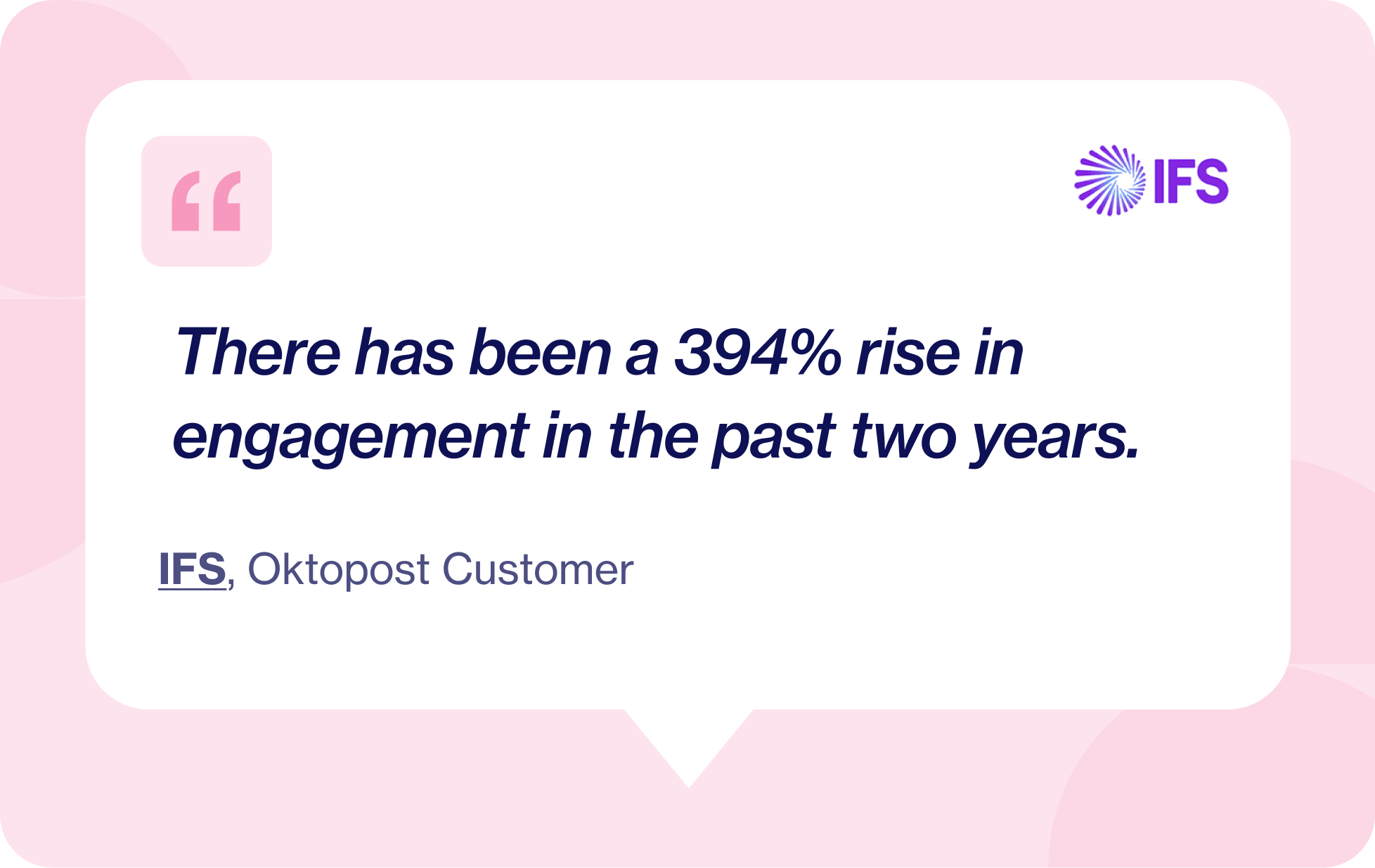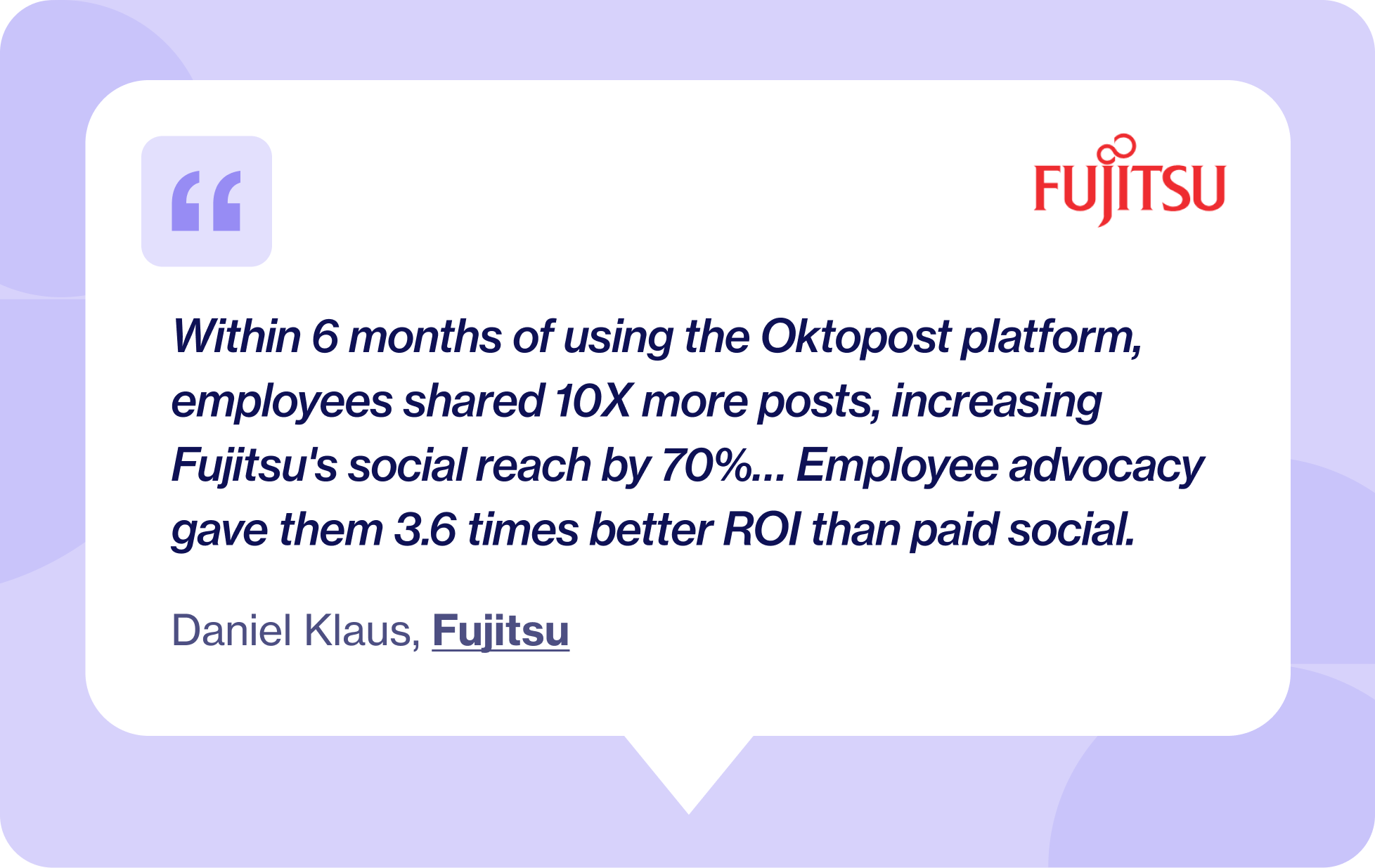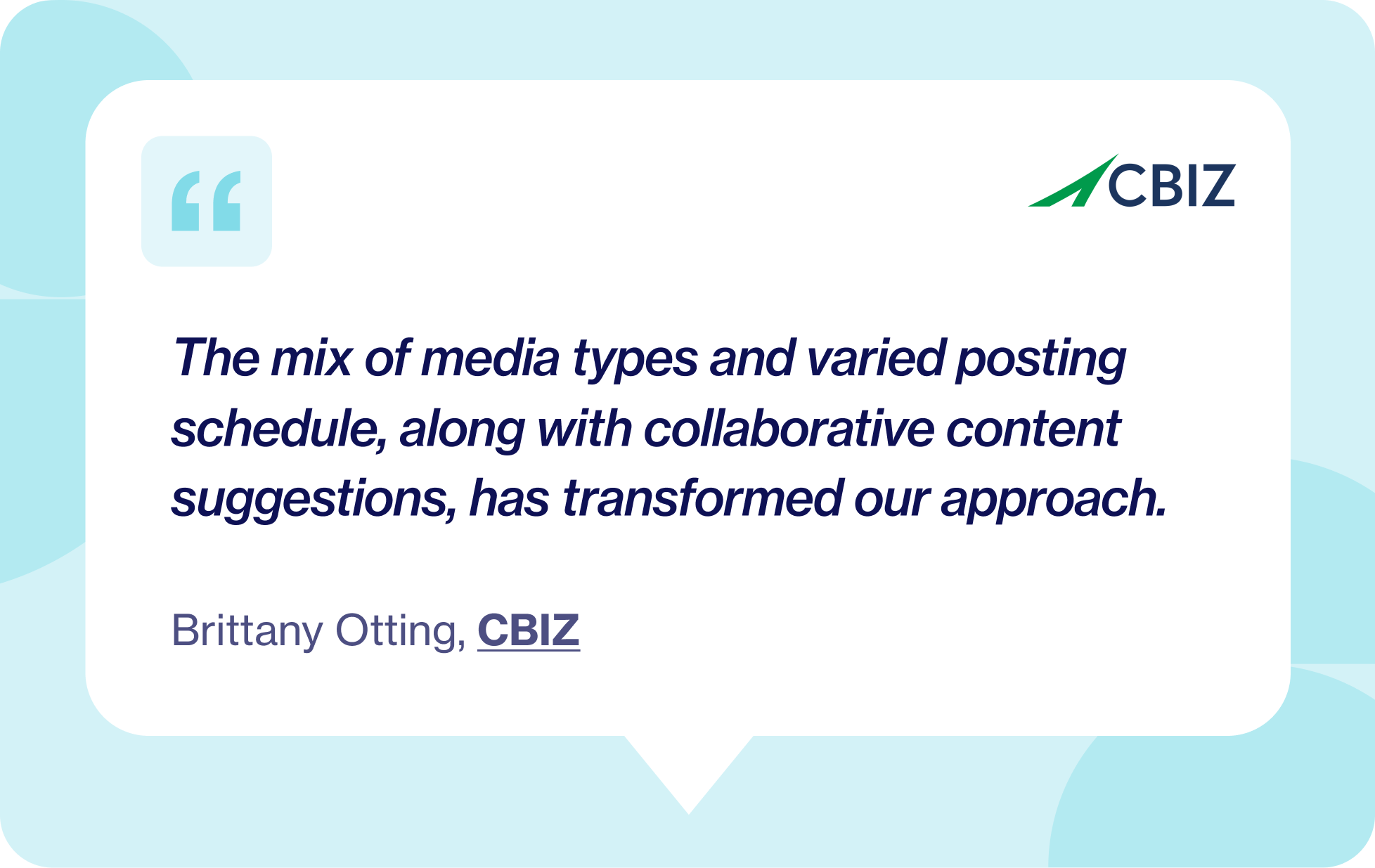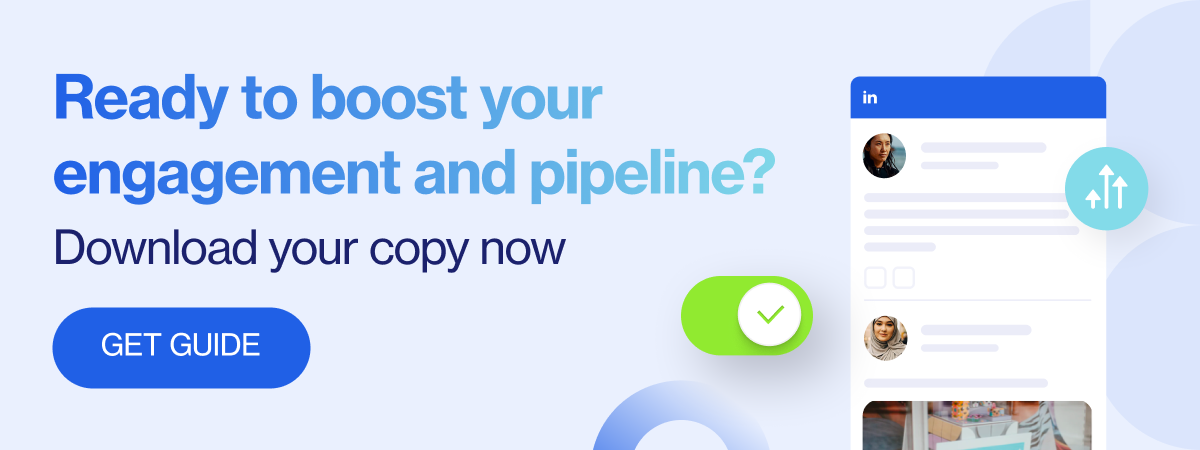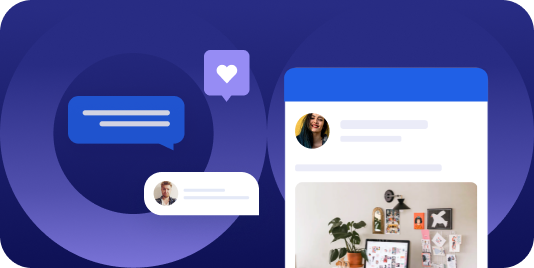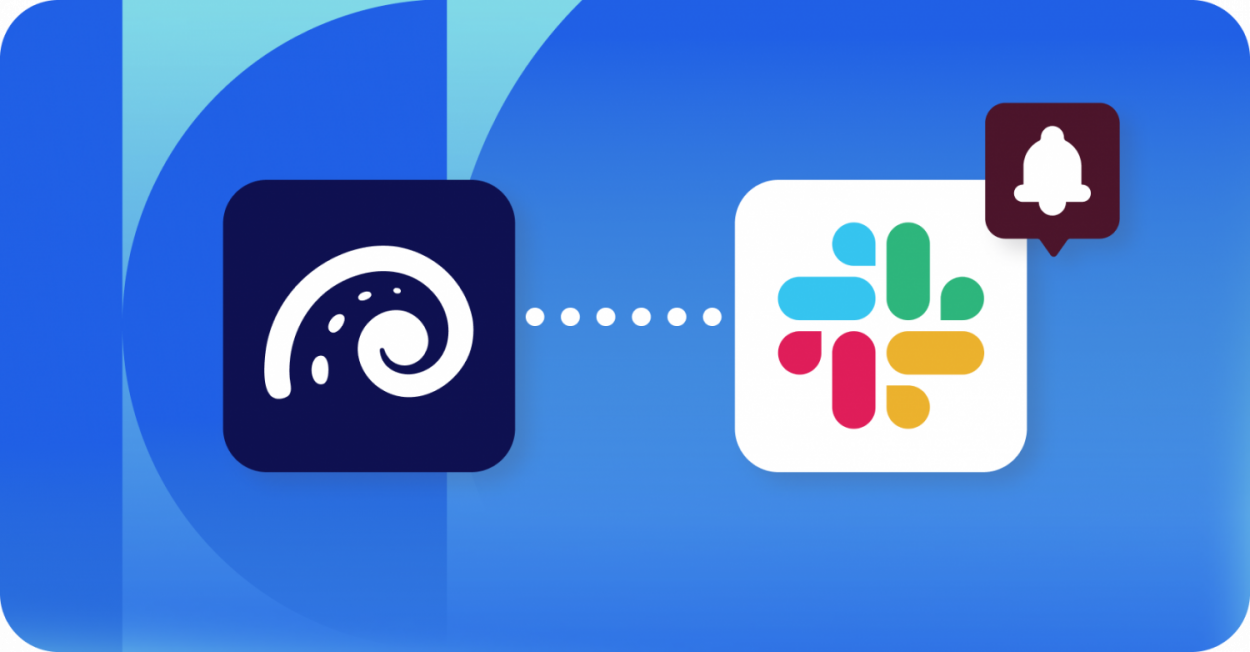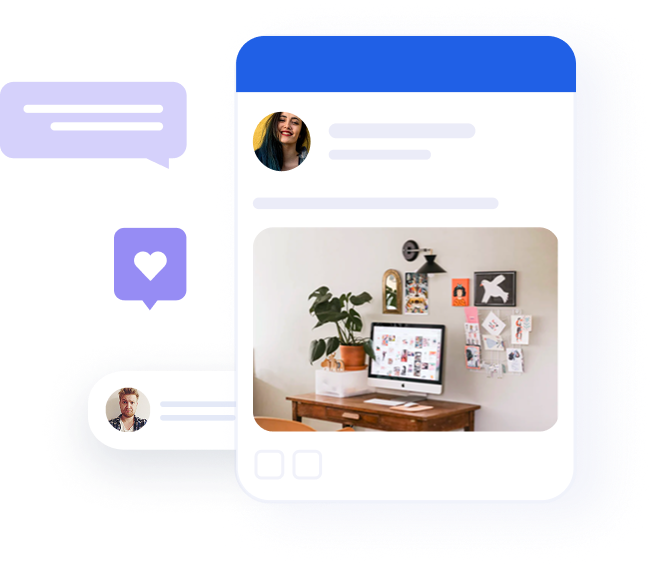Why your B2B social media engagement is low and how to fix it

Table of contents
- The real cost of low engagement in B2B
- Common mistakes that tank social performance
- Three fixable reasons your engagement stays low
- What high-performing B2B brands do differently
- Case study: How CBIZ increased LinkedIn engagement by 67%
- A quick checklist to reboot your social strategy
- Conclusion: Engagement is a strategy, not a surprise
The real cost of low engagement in B2B
You’re posting regularly. You’ve got polished graphics. You’ve even invested in scheduling tools and hired content creators. But the results? A trickle of likes. A few generic comments. A low engagement rate that barely makes a difference.
If you’re in B2B marketing, this situation probably feels familiar and frustrating. Social media is supposed to build brand awareness, nurture trust, and generate leads. However, when engagement remains low, you begin to question whether the effort is worthwhile.
This blog post will help you identify the root causes of inefficient social media engagement in B2B and provide practical steps to turn things around. If your brand is stuck in a rut of low likes and even lower ROI, read on. And if you’re ready for a complete strategy reboot, grab our free downloadable guide at the end of this post.
Common mistakes that tank social performance
Low engagement isn’t just an analytics issue—it’s a business problem. In B2B, where relationships and trust are everything, your social media content is your handshake. When no one engages, it’s as if no one showed up for the meeting.
Here’s what’s really at stake:
- Reduced visibility: Platforms like LinkedIn and X use engagement metrics to determine what content is shown. No interaction? No reach.
- Diminished trust: A lack of likes or shares can make your brand look inactive or out of touch, even if your services are best-in-class.
- Fewer leads: Without engagement, fewer people click through, sign up, or start conversations.
— IFS,
Recommended for further reading
Three fixable reasons your engagement stays low
Let’s examine some of the most common and correctable reasons social media engagement falls short.
1. Content isn’t resonating
Your posts may be well-designed, but if they don’t solve problems, spark curiosity, or reflect your audience’s interests, they’ll be ignored. B2B buyers want expertise, insights, and relevance not just product updates.
Signs this is the issue:
- Posts that talk about you, not to them
- Industry jargon with no human tone
- Poor performance on “announcement” posts
2. You’re posting too randomly or too rigidly
Some companies post three times in one day, then go silent for two weeks. Others stick to a rigid calendar that ignores real-time trends. Neither strategy works.
Fix it by:
- Analyzing when your audience is active
- Scheduling posts consistently, not excessively
- Leaving room for responsive, timely content
- Interacting with those who do engage with your posts
3. Platform mismatch
LinkedIn is built for in-depth professional commentary. X is for immediacy. Instagram is visual. If you’re posting identical content across platforms, you’re likely underperforming on all of them.
Solution:
Tailor both the message and the format per platform. A LinkedIn carousel might become a Twitter thread. An Instagram Story might become a LinkedIn behind-the-scenes post.
What high-performing B2B brands do differently
Brands that consistently drive engagement—comments, shares, and meaningful clicks—have something in common: a clear, documented strategy.
1. They focus on the audience, not the algorithm
These brands begin by creating buyer personas and then develop content that educates, challenges, or entertains. They don’t chase trends, they provide value. However, a trending meme from time to time can be humorous and relevant.
2. They activate their employees
Employee advocacy is one of the most powerful levers in B2B marketing. When employees share content, it reaches wider, more trusted audiences.
3. They use analytics to adapt, not just report
Performance metrics should drive your next move. Top-performing teams review engagement rates, click-throughs, and content types every month to see what’s working and double down.
Case study: How CBIZ increased LinkedIn engagement by 67%
CBIZ, a leading professional services firm, faced the challenge of disconnected content and inconsistent engagement across its channels. By implementing Oktopost’s social media platform, they focused on three key changes:
- Scheduled content tailored for the platform and audience
- Strategic employee advocacy through training and enablement
- A mix of media types, including videos, carousels, and long-form posts
The result? A 67% increase in LinkedIn engagement and over $800K in influenced revenue.
A quick checklist to reboot your social strategy
If you’re ready to reboot your social presence, start with these steps:
Audit your last 30 posts
Which performed best? Look for patterns in format, topic, time of day, and tone.
Set monthly engagement goals
Example: “Increase LinkedIn engagement rate to 1.2% within 90 days.”
Create an employee advocacy strategy
Curate posts that employees can personalize and share easily.
Use the right tools
A platform like Oktopost can help you:
- Schedule across channels
- Measure engagement by persona and campaign
- Activate employee advocacy at scale.
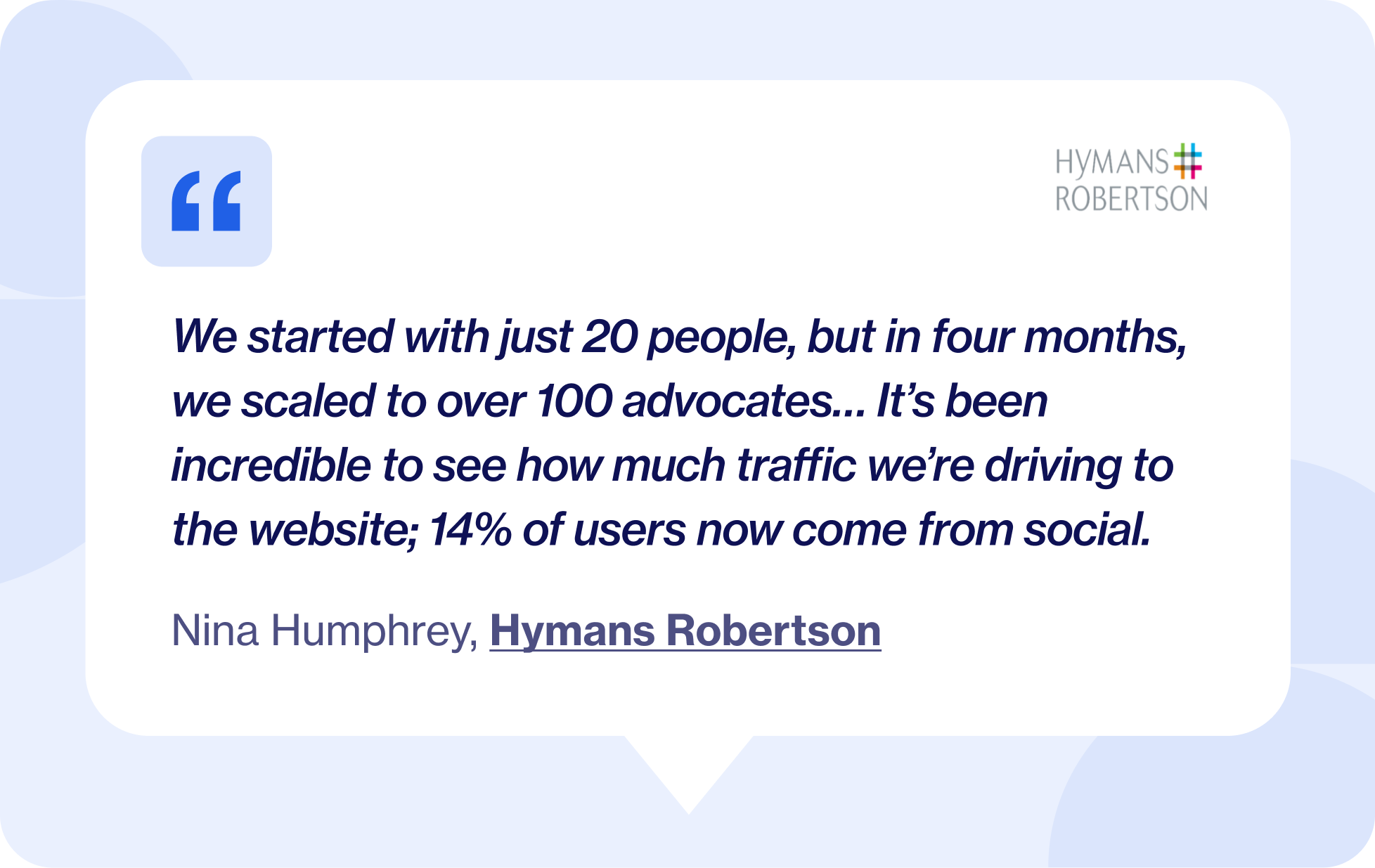
— Nina Humphrey, Hymans Robertson
Conclusion: Engagement is a strategy, not a surprise
In B2B, your audience doesn’t just want to be spoken to—they want to participate. That’s the real metric of success. If you’re not getting the engagement you want, it’s time to adjust your approach.
Small changes to timing, tone, and targeting can yield big results. And with the right tools, like Oktopost, you can do it efficiently—and prove it’s working.
Download the full guide to fix your social strategy.
Download our full guide → “How to fix inefficient social media engagement” to access proven tactics, real customer stories, and editable audit templates.
